Get ready to uncover the hidden origins of Valak, a figure not found in the Bible but whose story intertwines with ancient myths.
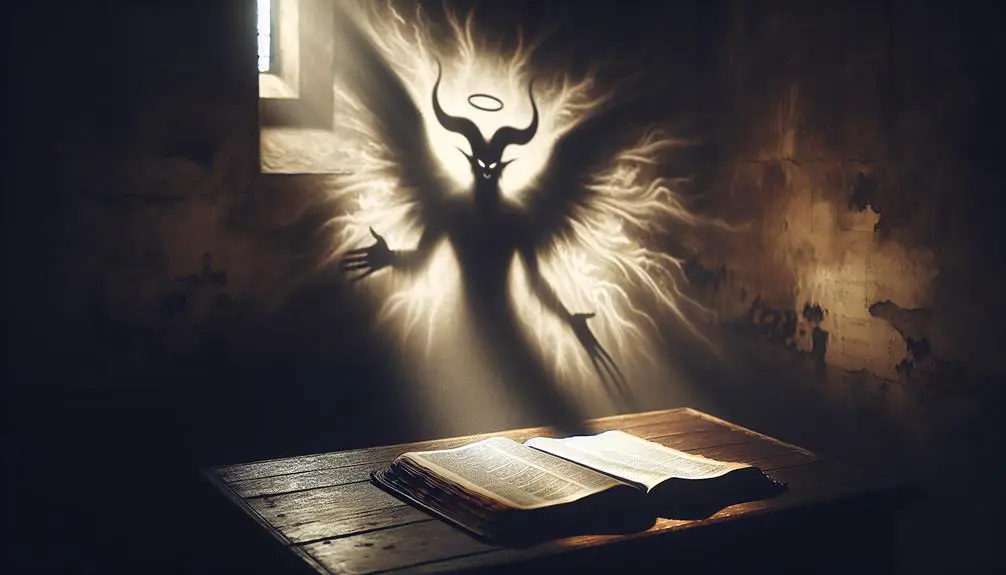
Valak in the Bible
When you think of Valak, you might recall the chilling character from 'The Conjuring 2,' but you'll be hard-pressed to find this demon's name in any traditional biblical text. This discrepancy raises intriguing questions about the evolution of demonic figures in religious literature and their impact on modern entertainment.
As you explore Valak's origins and its journey from ancient texts to the silver screen, you'll uncover a fascinating blend of myth, literature, and theology that challenges the conventional boundaries between sacred and secular narratives. This intersection invites a deeper investigation into how contemporary media reshapes ancient myths and why these adaptations resonate so strongly with audiences today.
Key Takeaways
- Valak does not appear in any canonical biblical texts.
- Biblical narratives focus on divine and angelic hierarchies, excluding entities like Valak.
- The portrayal of Valak in modern media lacks direct biblical grounding.
- Interest in Valak's origins has been sparked by cinematic adaptations, not religious texts.
The Myth of Valak Explained
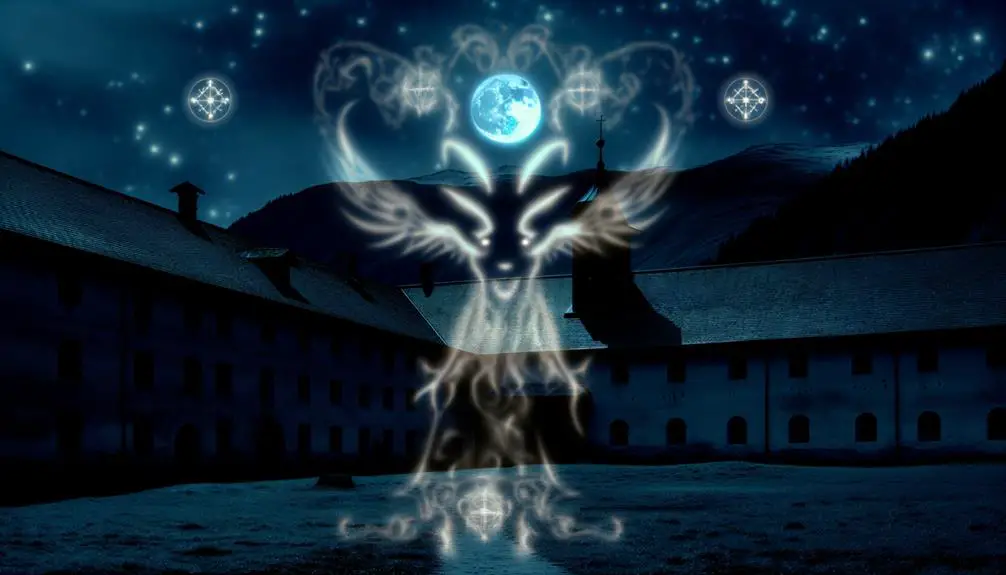
Despite common misconceptions, Valak doesn't originate from biblical texts but rather emerges from occult lore, where its depiction as a powerful demon has captivated imaginations for centuries. Within the realm of demon folklore, Valak holds a distinctive place, often characterized by its commanding presence among supernatural entities. This fascination with Valak underscores a broader cultural and historical interest in the arcane, where demons serve as symbols of the unknown and the forbidden.
In analyzing the myth of Valak, it's essential to understand the context in which this entity is situated within demon folklore. Unlike figures rooted in religious scriptures, Valak's story is woven from threads of myth, magic, and medieval grimoires. These texts, often written by scholars and mystics, catalogued a hierarchy of demons, with Valak frequently depicted as a high-ranking officer among the legions of hell. This portrayal reflects a complex synthesis of cultural fears and fascinations, projecting human anxieties onto the canvas of the supernatural.
Furthermore, Valak's evolution over time illustrates the fluid nature of demonology, where entities are transformed by their interactions with human culture. As stories of Valak spread, they were embellished and adapted, reflecting the changing tastes and concerns of society. This dynamic relationship between demon folklore and cultural context highlights the role of supernatural entities as mirrors for human thought and emotion.
Searching the Scriptures
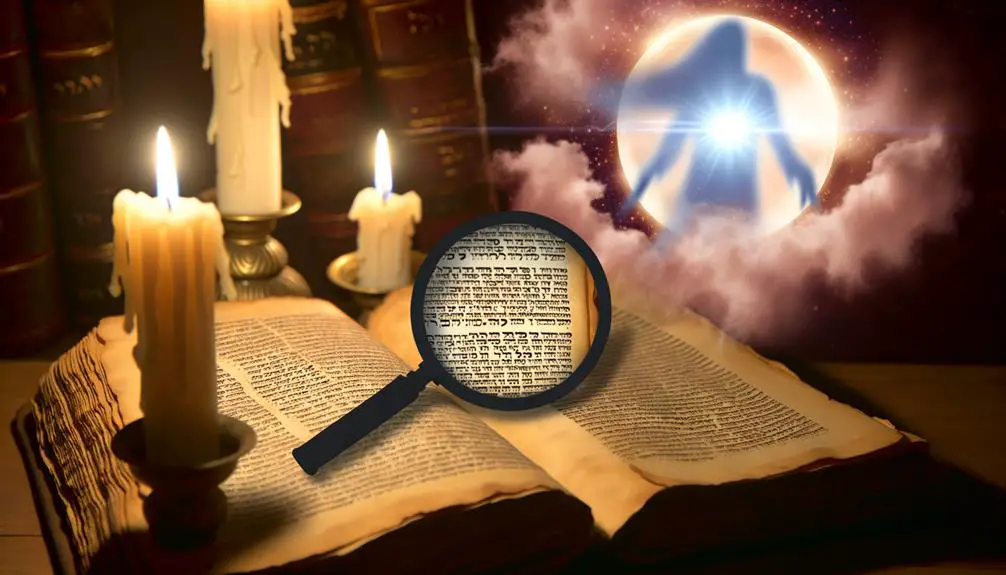
You must examine biblical references to understand Valak's scriptural presence or absence accurately. This analysis involves scrutinizing texts for direct or indirect mentions, considering the historical and cultural context of such references.
Your evaluation will determine if Valak's portrayal in modern media has any biblical grounding or if it stems purely from mythological interpretations.
Biblical References Explored
In exploring the scriptures, it becomes evident that the figure of Valak doesn't appear in canonical biblical texts. This realization prompts a deeper dive into the nature of divine encounters and angelic hierarchies as described in the Bible.
The scriptures are rich with descriptions of interactions between humans and the divine, offering detailed accounts of angelic beings serving as messengers or warriors in a celestial hierarchy. However, the absence of Valak within these narratives underscores the importance of distinguishing between scriptural entities and those derived from other traditions or folklore.
Scriptural Presence Analysis
Delving into the scriptures reveals no trace of Valak, prompting a thorough analysis of its scriptural presence, or rather, the lack thereof. This absence raises intriguing questions about the origins and evolution of Valak within religious and mythological narratives. While the Bible meticulously outlines both angelic hierarchy and demon classification, Valak's absence is notable.
- The Bible's detailed angelic hierarchy lacks mention of Valak, suggesting external origins.
- Demon classification in scripture is extensive, yet Valak remains unlisted.
- This absence invites speculation on non-biblical influences on Valak's mythology.
- Comparative religious studies might offer insights into Valak's conceptual genesis.
- The exploration of folklore and demonology could shed light on Valak's popularization outside scriptural texts.
This analytical journey underscores the complexity of religious and mythological narratives, illustrating how figures like Valak can emerge from the interstices of established lore.
Valak's Origins in Literature
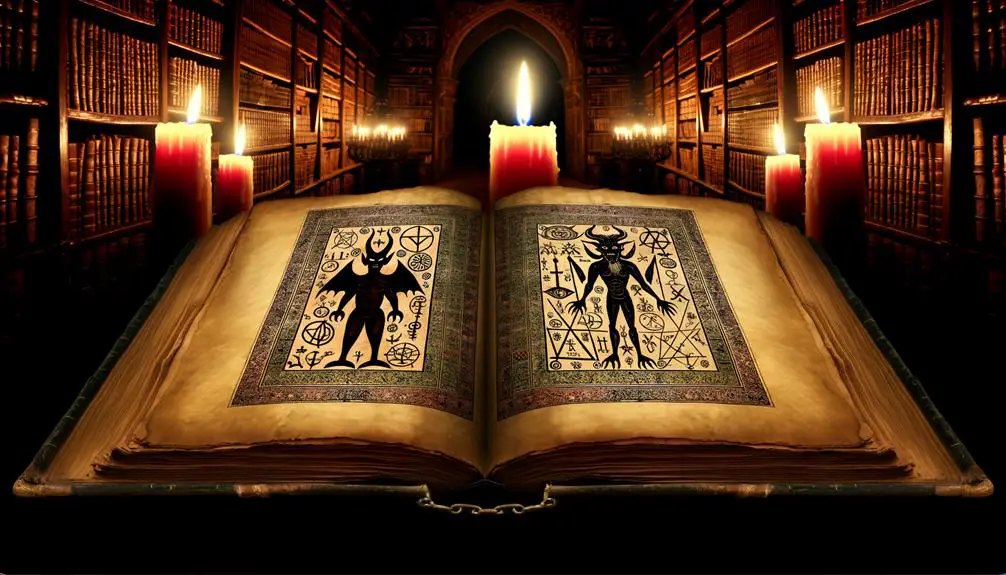
Valak's literary origins trace back to the lesser-known grimoires of the 16th century, where it first appears as a powerful demon entity. This period, rich in esoteric traditions and burgeoning occult interest, provides the fertile ground from which Valak's narrative emerges. Its initial portrayal in these texts is markedly different from the interpretations and embellishments seen in later centuries. The demon's depiction is deeply entwined with the Gothic origins of its literary journey, reflecting the era's fascination with the supernatural and the macabre.
The writings of the time often presented Valak not merely as a demon but as a complex figure with specific attributes and powers, a testament to the intricate demonology developed during the Renaissance. Scholars analyzing these texts must navigate a landscape rife with historical inaccuracies and mythologization. The original descriptions of Valak, while detailed, were subject to the era's limited understanding and the authors' imaginations, leading to a portrayal that blends myth with a smattering of theological speculation.
This scholarly pursuit uncovers a fascinating aspect of Valak's literary evolution: the transition from a demon of prophecy and knowledge to a figure embellished with Gothic horror elements. The demon's portrayal is shaped significantly by the cultural and historical context of the 16th century, reflecting broader societal anxieties and fascinations with the occult.
Understanding Valak's origins in literature demands a critical examination of these early texts, acknowledging their contributions to Gothic literature while recognizing the historical inaccuracies that have shaped the demon's mythos. It's a journey that underscores the complexity of separating fact from fiction in the study of demonic entities within historical texts.
Pop Culture and Valak
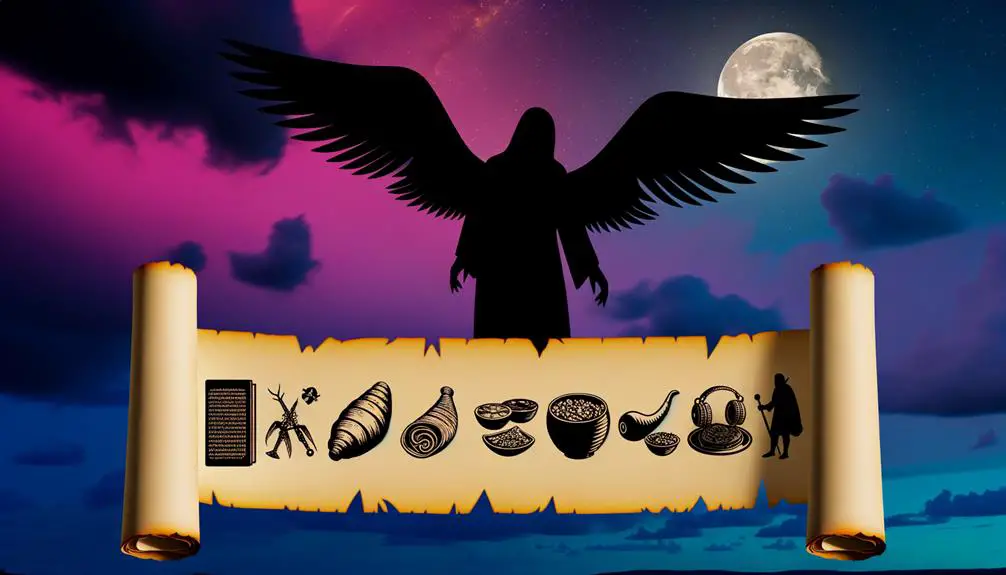
You must consider how Valak's cinematic debut reshaped its historical and mythical essence, captivating horror fans worldwide.
The perception of Valak among these fans highlights the intersection between folklore and modern entertainment, underscoring the character's evolution across various media platforms.
This analysis reveals the complexities of adapting ancient entities into contemporary pop culture, inviting a deeper understanding of Valak's enduring appeal.
Valak's Cinematic Debut
In the realm of popular culture, Valak made a significant cinematic debut in 'The Conjuring 2,' captivating audiences with a terrifying portrayal. The film's impact and the director's vision brought this obscure figure to the forefront of horror cinema, showcasing a masterful blend of lore and creativity.
- Director's Vision: James Wan's interpretation added depth to Valak's character, diverging from traditional depictions.
- Film Impact: Elevated Valak from obscurity to a modern icon of horror.
- Stylistic Choices: The haunting visual design contributed to the film's eerie atmosphere.
- Narrative Integration: Seamlessly wove Valak into the Conjuring universe's lore.
- Cultural Footprint: Sparked widespread interest in Valak's historical and mythological origins.
This analytical approach highlights how the film reshaped perceptions of a lesser-known demonic entity.
Horror Fans' Perception
Following the cinematic debut of Valak in 'The Conjuring 2,' horror enthusiasts have drastically reshaped their perceptions of this enigmatic figure within pop culture. The portrayal of Valak not only sparked widespread interest but also led to the emergence of numerous fan theories trying to link the character's on-screen presence with ancient supernatural beliefs.
This intersection of horror cinema and folklore has encouraged a deeper analytical dive into the origins of Valak, propelling discussions beyond mere entertainment. Fans are now meticulously examining historical texts and religious scriptures, seeking connections that might explain the character's attributes and motivations. Through this lens, Valak has transcended the role of a mere antagonist, becoming a focal point for discussions on the influence of supernatural entities in human culture.
Valak's Evolution in Media
Valak's portrayal in media has undergone a significant transformation, evolving from a lesser-known demonic figure in ancient texts to a central antagonist in modern horror cinema. This shift illustrates not only the changing landscape of horror entertainment but also the adaptability of demonological lore in contemporary storytelling.
- Demonology comparison highlights Valak's metamorphosis from myth to screen.
- Modern interpretations diverge significantly from traditional descriptions.
- The character's evolution reflects broader trends in horror cinema.
- Valak's modern visage taps into contemporary fears and anxieties.
- The demon's cinematic journey underscores the interplay between ancient lore and pop culture.
Analyzing Valak's journey from obscure demonology texts to a household name in horror underscores the dynamic relationship between historical lore and modern interpretations, offering a fascinating glimpse into the evolution of demonic figures in media.
Theological Implications
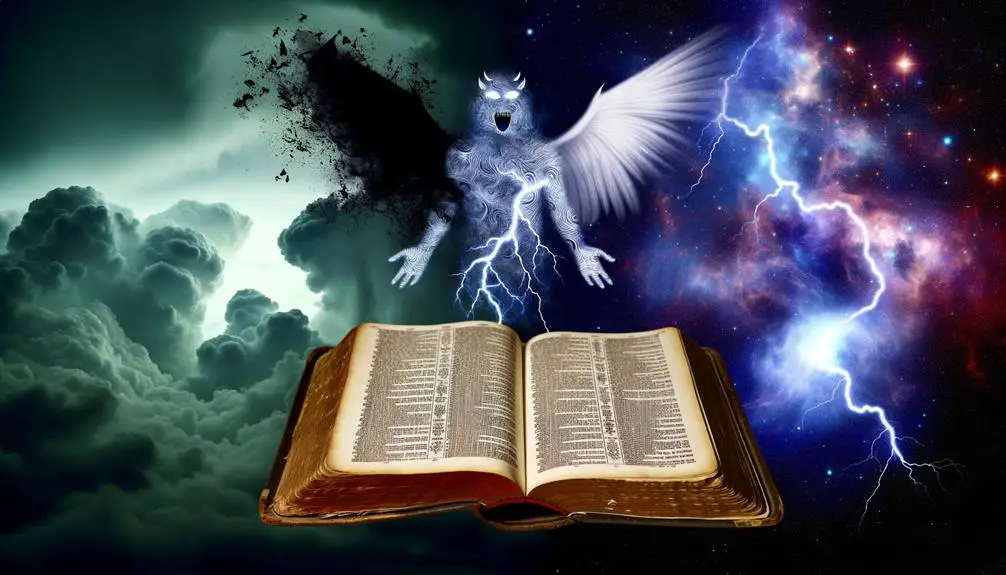
Exploring the theological implications of Valak within biblical contexts reveals complex interactions between demonology and traditional Christian narratives. At the core of these discussions, you'll find the themes of divine conflict and moral implications, which are significant for understanding the broader religious landscape. Divine conflict, in particular, underscores the struggle between good and evil, a foundational element in Christian theology. Valak, as a figure associated with demonology, personifies this conflict, challenging the divine order and prompting believers to reflect on the nature of evil and its place in the world.
The moral implications tied to Valak's narrative further complicate the theological discourse. You're invited to ponder the nature of sin, redemption, and the potential for salvation in the face of demonic influence. This reflection isn't merely academic; it has practical applications in how one lives out their faith, confronts personal demons, and seeks to understand the nature of temptation and evil.
Moreover, the discussion around Valak illuminates the broader question of how tradition and scripture interact. You're encouraged to consider how interpretation and cultural narratives influence the understanding of biblical texts and the figures within them. This analysis doesn't diminish the spiritual significance of these texts but rather enriches your comprehension of their multifaceted meanings.
Unraveling the Mythos
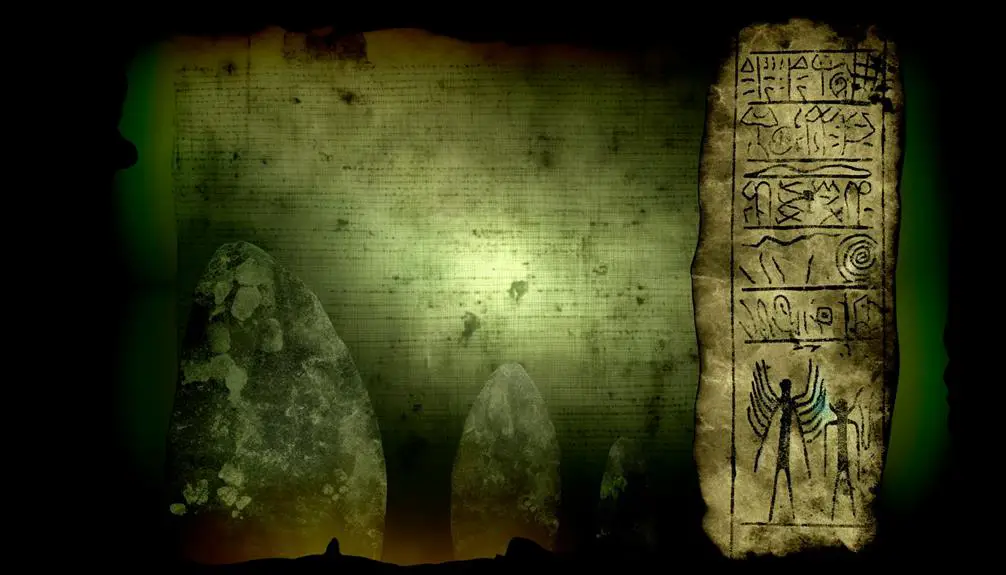
While delving into the mythos surrounding Valak, it's crucial to distinguish between historical documentation and folklore to grasp the entity's true significance within religious texts. The narrative of Valak often intertwines with demonology misconceptions and historical inaccuracies, leading to a complex web of beliefs that demands careful untangling. You're tasked with navigating through layers of stories that have been shaped by centuries of cultural and theological evolution.
To aid in this exploration, consider the following points:
- The origin of Valak's depiction in religious and demonological texts may not align with popular representations seen in media.
- Historical inaccuracies often stem from translations and interpretations of ancient manuscripts, affecting our understanding of Valak.
- Demonology misconceptions can arise from conflating fictional accounts with theological beliefs, leading to a distorted view of Valak's role.
- The influence of folklore on the perception of Valak can't be understated, as it blends elements of truth with imaginative embellishments.
- Critical examination of sources is essential to discern the factual basis of Valak's story from mythologized versions.
Your journey through the mythos of Valak invites a rigorous examination of how stories evolve and intersect with our beliefs. It's a reminder that the pursuit of knowledge requires a discerning eye, especially when separating fact from fiction in the realm of demonology. By scrutinizing the roots of these narratives, you're not only uncovering the truth about Valak but also challenging broader themes of misinformation within historical and religious studies.
Frequently Asked Questions
How Do Religious Scholars Reconcile the Inclusion of Figures Like Valak in Modern Religious Discussions, Considering Valak's Absence From Canonical Texts?
Scholars tackling discussions about figures absent from canonical texts rely on historical context and textual criticism. This approach helps them understand these inclusions in modern discourse by examining the evolution of religious texts and traditions. They analyze why certain figures, despite not being in the original texts, become topics of discussion.
What Are the Psychological Effects on Individuals Who Deeply Explore or Believe in Entities Like Valak, Especially in a Religious Context?
Ironically, diving into tales of entities like Valak, you're treading a fine line between curiosity and obsession. The psychological impact isn't just about fear; it's about the cultural fascination that blurs reality and fiction.
Analyzing this, you'll find a mix of intrigue and unease, where belief in such figures can profoundly shape one's worldview. It's a testament to the power of narrative, influencing not just emotions but deeply held beliefs.
How Has the Interpretation of Demonic Entities, Such as Valak, Evolved in Theological Studies Over the Centuries?
You'll find that the interpretation of demonic entities, like Valak, has significantly evolved due to cinematic influence and a deeper dive into their historical origins. Scholars now juxtapose ancient texts with modern portrayals, uncovering how folklore and theology have shaped these figures over centuries.
This analytical approach reveals a fascinating trajectory from feared demons to complex characters reflecting societal anxieties and theological debates, highlighting the dynamic nature of such entities in theological studies.
Are There Specific Rituals or Protections Against Valak Mentioned in Non-Biblical Religious or Occult Texts?
You're diving into how non-biblical texts deal with Valak, focusing on occult practices and their historical origins. These texts often detail specific rituals or protections against such entities.
Scholars have analyzed these practices, tracing their evolution and how they reflect broader cultural beliefs about demons over centuries. This exploration reveals a fascinating intersection between folklore, religion, and the occult, offering a rich field for further scholarly investigation.
How Do Different Religious Denominations View the Incorporation of Fictional Demons Like Valak Into Popular Culture, Especially When Linked to Biblical Teachings or Imagery?
Imagine navigating a labyrinth of beliefs, where the walls are painted with modern myths. You're witnessing the interplay of cultural appropriation and media influence as religions react to fictional demons, like Valak, entering popular culture.
Various faiths scrutinize these incorporations, analyzing their impact on biblical teachings and imagery. They question the blurring lines between sacred texts and fictional narratives, striving to understand the consequences on collective faith and individual perception.
Conclusion
In conclusion, while Valak doesn't find its origins in the Bible, this entity's evolution through literature and pop culture highlights a fascinating intersection of beliefs and entertainment.
Interestingly, a 2019 survey showed that 55% of Americans believe in the existence of demons, underscoring the profound impact such mythological entities have on societal perceptions.
This exploration into Valak's mythos not only enriches our understanding of folklore but also invites reflection on the broader implications of such beliefs in contemporary society.

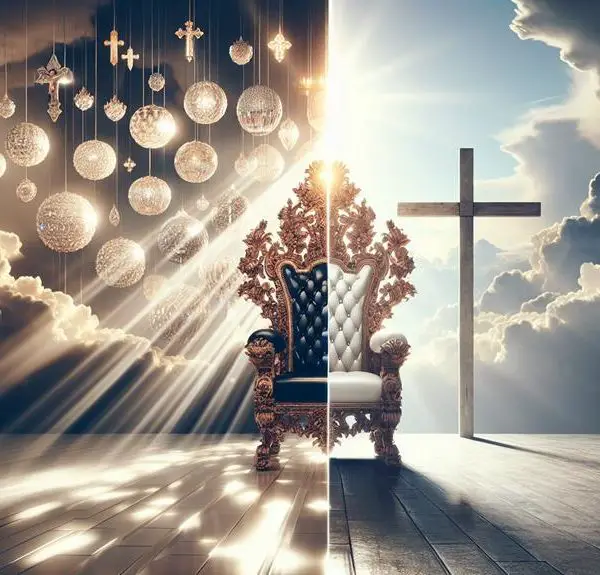
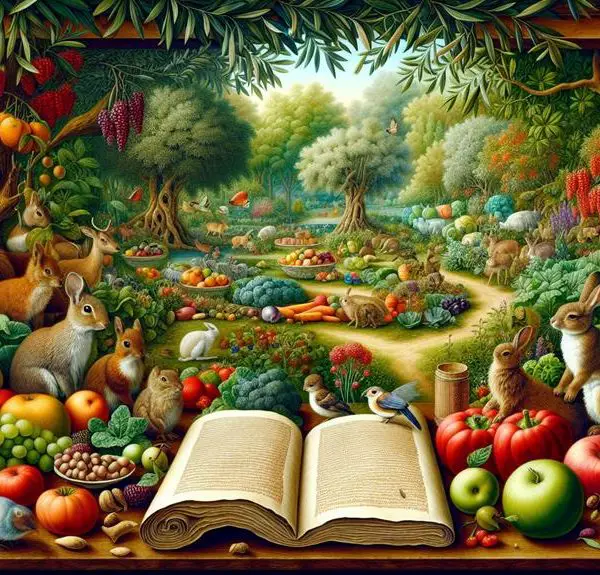
Sign up